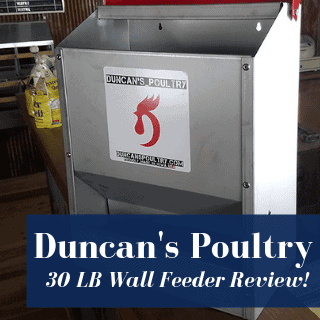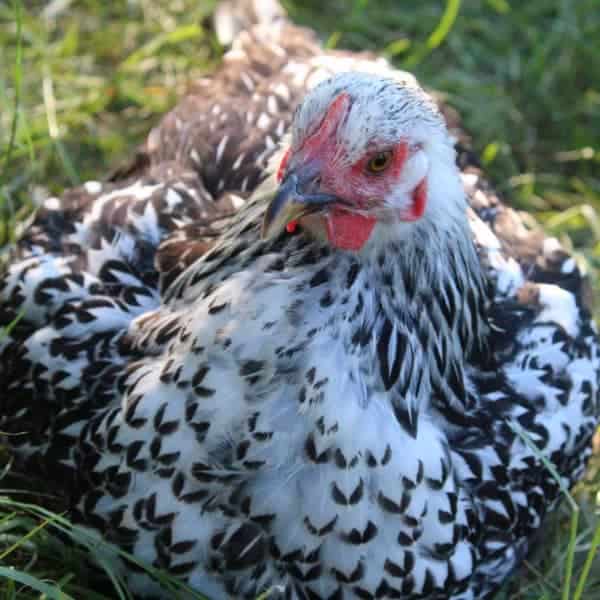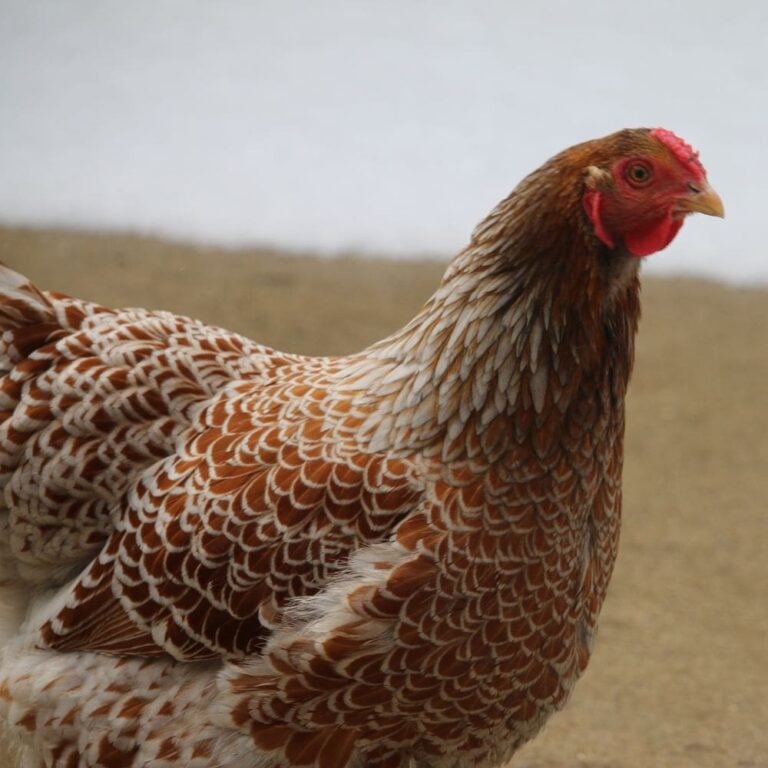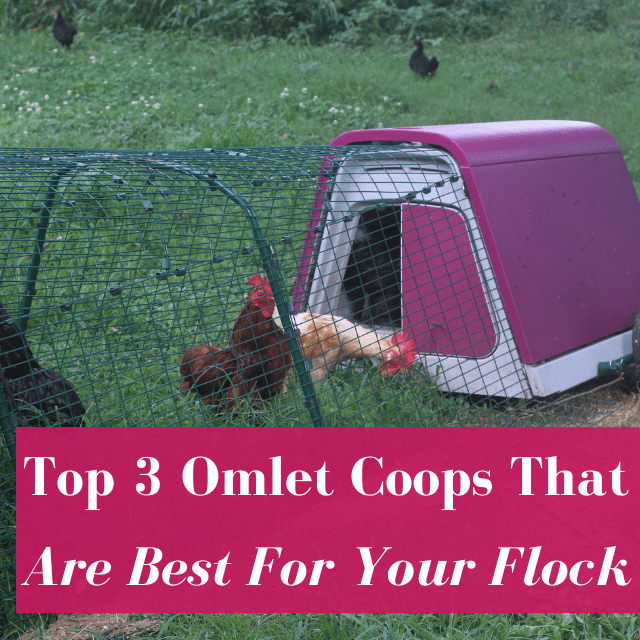Save money on chicken feed. Wouldn’t we all like to know how to do that?
Since we began keeping chickens many moons ago, I’ve searched for ways to raising happy, healthy chickens while not breaking the bank.
(Want extra help? Grab my book Chickens: Naturally Raising A Sustainable Flock!)
Over the years, I’ve come up with plenty of ways that allow us to save money on chicken feed without compromising on the quality of the food we produce or on my flock’s quality of life.
In this episode of What The Cluck?! I share these secrets with you.
You’ll learn:
- The best way to save money on chicken feed
- The one person you should talk to at your local grocery store to snag free food
- Why fermenting is critical to save money on chicken feed
- The fastest way to begin saving today
Links we discuss in this episode:
Best chicken feeders
(LIKE THIS PODCAST? LISTEN TO THE REST HERE)
Transcript for this episode:
Hi, this is Maat from FrugalChicken, and welcome to session 10 of What The Cluck, a podcast devoted to keeping chickens for fun and self-sufficiency.
Today we’ll go in depth on 8 ways you can money on chicken feed. And I promise you won’t be disappointed.
Now, like you, I don’t have all the money in the world, so we have to look for ways to save money on chicken feed while still raising a happy and healthy flock.
I’ve learned over the years various ways to cut corners without compromising on the quality of life my flock has, and the quality of food we produce for us to consume.
In fact, many of the things we’ll talk about today are fairly inexpensive ideas to implement to save money on chicken feed, but are actually much better for your chickens.
So, let’s get into it.
The first way to cut costs is to ferment your chicken feed. So, what does this mean? If you use commercial chicken feed, you can soak it under water for up to 48 hours using some sort of starter like whey or fermented vegetable juice as a starter.
If you’re using a homemade chicken feed, whether you need a starter depends on what’s in your feed, but the idea of soaking the feed for up to 48 hours remains the same.
In essence, what you’re doing is creating an environment that allows beneficial bacteria to grow.
This beneficial bacteria is a good thing – studies show that it helps boost your flock’s immune systems, and they lay eggs that are better for you.
Studies show that eggs from hens that eat fermented foods are lower in pathogens such as salmonella and E. coli, and are lower in cholesterol. They also have more vitamin D and A and beta carotene.
Now, we go in depth on fermented feed, how to use it to save money on chicken feed, and how to make it in my course, Feeding Your Hens Right, so if you’re looking for guidance about how to ferment different feeds, that’s a resource that’s there for you.
There’s videos where I show you exactly what to do and what to look out for.
The next thing you can do to save money on chicken feed is feeding only what they’ll eat so there’s no wasting, and this goes for whether you use a homemade chicken feed or a commercial feed.
One option is to hang chicken feeders. This helps reduce waste, because they can’t scratch through it and it also prevents them from soiling their feed.
READ NEXT: ORGANIC CHICKEN FEED RECIPE (THAT WON’T BREAK THE BANK)
Once feed gets soiled, chickens can get kind of picky about it, and if they don’t, you don’t want them eating it anyway, because chicken guts are loaded with nasty pathogens like E.Coli, camphylobacter, and Salmonella, which we discussed a bit above.
Another option or place a plastic mat under their feeder to catch whatever falls down, and feed it back to them. Of course, this takes some maintenance, because as your hens drop feed onto the mat, they might also poop on it.
But it’s a great way to save money on chicken feed.
A third option is to build a PVC feeder that free feeds, but only feeds a little at a time. You can make this with a straight piece of PVC to hold the chicken feed, and a curved piece, which is where your flock will actually eat from.
This set up costs only a few dollars to create, but can potentially save you a bundle of money on chicken feed.
If you do make one of these, I suggest going with 3 or 4 inch PVC so it’s wide enough to actually hold enough feed and the chickens can eat from it easier, get their heads and beaks into it, etc.
You can also offer feed for only a set period of time, for example 20 minutes to a half hour, and remove it after so they don’t toss the feed everywhere to save money on chicken feed.
This, again, takes some maintenance and you’ll have to stay on top of it. If you’re like me, and multitask, which means you forget things a lot, it might not work.
But if you like watching your chickens eat, like interacting with them while they feed, then this option will work well for you.
The third thing you can do to save money on chicken feed is create a mealworm farm, and then feed the mealworms to your chickens. While this takes a bit of money to set up, it’s not a huge investment, and doesn’t take much time.
Yes, you’ll have to touch creepy crawlies, but my guess is if you have chickens, you’re not too concerned about touching insects, right? You can always wear gloves.
Now, the idea here is you purchase mealworms, and have them breed in plastic containers so you have an unending supply of protein for your chickens.
And mealworms are an excellent source of proteins, and an easy way to save money on chicken feed.
So, where do you buy mealworms? Go to TheFrugalChicken.com/mealworms for the dried mealworms I recommend, and I’ll put that link in the show notes.
You can also buy them locally if you have a local supplier, or from other online sites.
You want to make sure you buy live mealworms, so they’re able to reproduce, and there’s some debate about buying by the count or the pound.
So when you go buy mealworms online, some sellers sell them by the count, meaning you can buy 1,000 mealworms or 200 mealworms, you get the picture, or you can buy them buy the pound, meaning you’ll buy 1 pound or 5 pounds of mealworms, or whatever the seller sells them by.
Like I said, there’s some debate about whether it’s better to buy by the pound or the count to save money on chicken feed.
I believe it’s better to buy by the count, and the reason is because when you buy by the pound, you might be getting big worms, or little ones, or who knows.
You only know you’re getting a set poundage, you don’t know how many you’re getting.
When you buy by the count, you know the amount you’re getting, and because your goal is to breed these mealworms to feed the offspring to your chickens, you can be fairly sure you’ll be getting enough to really supplement part of their feeding program to save money on chicken feed.
Even if they’re tiny, they will grow to become adults, and if they’re adults, then they can breed right away.
Either way, you know you’ll have enough to set up a sustainable breeding program to save money on chicken feed.
Now, for your mealworms, you can use oatmeal as bedding, and feed them scraps like carrots to sustain them.
READ NEXT: TREATS THAT YOUR HENS WILL LOVE!
You will have to move them around as they breed, but you can use a spoon or gloves so you never have to actually touch them.
Other than that, they’re very low maintenance, and very healthy for your chickens. Mine go nuts over mealworms, it’s like kids on Christmas morning when they see I have mealworms for them.
Similar to mealworms, you can offer red worms, aka red wrigglers, to your chickens, and in some ways, these are easier to acquire and require even less maintenance than mealworms.
And these are the same worms you add to soil or compost to improve the soil.
You can purchase these red worms at bait shops locally, or online.
See TheFrugalChicken.com/redworms for a supplier I recommend on Amazon, and I’ll also put that link in the show notes.
So like mealworms, you can purchase red worms by the count or by the pound, and I recommend, again, buying them by the count to save money on chicken feed.
To house red worms, you’ll need some material, like newspapers and cardboard as a bedding substrate, and a bit of dirt to start them out, and they’ll need food, of course.
Unlike meal worms, you don’t need to move red worms around unless they grow too big for their container, in which case you’ll have to move them into either a larger bin, feed more to your chickens, or split up your worm population into different containers.
You can feed them whatever kitchen scraps you have, and that’s pretty much what they eat. They breed easily, and you’ll have an active supply of protein for your chickens to save money on chicken feed.
One idea is to feed the worms to your chickens in your garden when you’re not growing anything the chickens can destroy, which means you can spread the worm castings in your garden while feeding your chickens, and their scratching will integrate the castings into your soil.
It’s a nice way to multitask, right?
Now the only thing about the red worms is you have to keep a watch on your population to make sure you don’t plow through it all as you try to save money on chicken feed.
In a similar vein, you can also save money on chicken feed by letting them scavenge in your compost pile.
Chickens will eat whatever it is your composting, but more importantly, they’ll eat bugs, worms, larvae, and whatever else is in there, all while working your compost to decompose it faster.
They’ll also add their own manure to the mixture, increasing the power of your compost.
While chickens shouldn’t only eat compost, this is a nice, green way to add to their diet, and your chickens will love it because it gives them something exciting to do.
So the next thing you can do to save mega bucks when raising chickens is to grow as much of their feed on your property as possible, and of course you’ll need to use a homemade feed recipe if you do that.
On the blog, I have a great recipe, which is pretty popular on YouTube as well. In the show notes, I’ll put a link to it, you can also find it on the FrugalChicken YouTube channel at TheFrugalChicken.com/YouTube, you can find the video there.
Now the first question I’m sure you have is how do you know how much to grow to save money on chicken feed.
Start with how much your chickens eat, and reverse engineer to figure out how much to grow. A good crop to start with might be wheat or millet, which are high in protein, but require little space to grow.
And even if you can only grow half or a quarter of what your chickens eat, and then use commercial feed to make up the difference, some is better than none to save money on chicken feed.
At the same time you can use the chicken manure to enhance your soil that you grow their food in, making this a nice way to close the circle, so to speak.
On our farm, we grow wheat, peas, and greens, and we’re considering trying oats. But the wheat and peas are super simple to grow and harvest, so that’s where we get the most bang for our buck to save money on chicken feed.
If you don’t have a lot of time, you can start with as much as you can do, and improve from there.
In the same vein, sprouting seed is one of the least time consuming ways you can save money on chicken feed. All you need is a bucket, some water, and some seed you know will sprout.
READ NEXT: HOW TO GROW FODDER (AND WHY YOU SHOULD)
When you sprout seeds into fodder, you take a fixed amount of nutrients, and exponentially multiply it until it becomes something more nutritious than it was before you sprouted it.
A good one to start with are peas, for pea shoots, which are very nutritious for people and animals, and another one I like are sunflower seed shoots.
Chickens love sunflower seeds, and they’re great for cooler weather because the seeds have a lot of fat in them. The chickens love the sprouts as well.
So chickens are getting the benefit from the seed itself, the shoot, which has grown, and the roots.
But probably my favorite seed to sprout is wheat, in part because it’s plentiful in my area, but also because it’s relatively cheap, about $6 for a 50 pound bag, and wheat has a lot of protein in it, so your chickens will get the benefits of fresh greens, but also an extra amount of protein.
Wheat is also really, really, easy to sprout and grow, and it doesn’t require much space or light to save money on chicken feed. Mostly it requires warmth and moisture.
You can also sprout barley, which is popular, and it grows faster than wheat. I noticed that barley takes 5 or so days before it’s at 2-3 inches in height, while wheat takes about 9 days.
I grow wheat because it’s easy to get in our area, for barley, I would have to have it shipped to me.
And again, in my course Feeding Your Hens Right, we go in depth on fodder and how to grow it, how to avoid things like mold, and mistakes to avoid.
I would say that sprouting fodder is the best way we save money on chicken feed, and they’re satisfied to get something fresh.
So the final way we’ll talk about today to save money on chicken feed is to use produce from the grocery store or a restaurant, and in this case, the food is still good, it’s not completely rotten or anything, but the grocery store can’t sell it for whatever reason.
Maybe it has a spot on it, or in some cases, they give us leftovers from making those fruit cups you see at the market, or the things of pre-chopped veggies you can buy.
It’s ok to feed your chickens produce as a treat or as a small portion of their diet, I don’t recommend it as their entire diet, and of course there are some foods you need to avoid, like potatoes and onions, but if you’re particularly hard up and it’s either feed your chickens produce from the grocery store or let them starve, then of course this is a good option.
We do actually do this, we receive food every week or so from a local supermarket to save money on chicken feed, and what we did was talk to their produce manager.
Don’t try anyone else, because they’ll just refer you to the produce manager.
Go to a local mom and pop store, don’t try a major chain or anything, you probably won’t be successful, but a small store might be happy to work with you.
In our case, the produce manager didn’t want to throw the food away, but before I came along, she didn’t have any option.
So it really was a win-win situation that lets us save money on chicken feed.
What I do is when I go to a new location, I feel them out, so I might talk to someone in the produce section, and ask what they do with all the food that can’t be sold and engage them in conversation to see if there’s an opening to ask.
It warms them up a bit before asking if they want to give the produce away to help us save money on chicken feed.
Most of the food goes to our pigs, but the chickens do get some fresh stuff, like grapes, strawberries, and the like.
An excellent, excellent way to extend the power of this free food is to ferment it, and we’ve talked a bit about fermenting, but for produce, it’s especially good if you can’t keep it all in your kitchen.
We get so many boxes, that we can’t bring it all inside, so I ferment it in 5 gallon buckets, and the food keeps really, really well that way, and becomes a more beneficial food because of the beneficial bacteria and everything.
It’s a good way to add probiotics into their diet, but like I said, it should not be the bulk of what you feed them. It’s a good way to save money on chicken feed, but it should not be the only way.
READ NEXT: 10 ABNORMAL CHICKEN EGGS & WHAT YOU NEED TO KNOW!
Well, I hope this podcast provides some insight into ways you can save money feeding your chickens.
There’s a lot of good ideas here that have worked well for me on my homestead, and hopefully one or two of these ideas will work for you.
As always, feel free to contact me with any comments or questions, and be sure to check out other chicken related articles on the blog, TheFrugalChicken.com.
If you liked this podcast, please feel free to give it a review and ratings in iTunes, I would definitely appreciate it. And don’t forget to subscribe to What The Cluck?! on iTunes so you don’t miss an episode.
If you haven’t checked out my new chicken nutrition course, Feeding your hens right, which comes out in January, head over to FeedingYourHensRight.com, all one word, to take a look.
Thanks again for listening to this episode of What the Cluck?! and I hope it helps you save money on chicken feed. See you next time!
I’d like to hear from you!
Which of these ideas to save money on chicken feed will you try? Email me at editor@thefrugalchicken.com or comment below!
Maat van Uitert is a backyard chicken and sustainable living expert. She is also the author of Chickens: Naturally Raising A Sustainable Flock, which was a best seller in it’s Amazon category. Maat has been featured on NBC, CBS, AOL Finance, Community Chickens, the Huffington Post, Chickens magazine, Backyard Poultry, and Countryside Magazine. She lives on her farm in Southeast Missouri with her husband, two children, and about a million chickens and ducks. You can follow Maat on Facebook here and Instagram here.






![You CAN Raise Meat Chickens (And Actually Go Through With It!) [Podcast]](https://thefrugalchicken.com/wp-content/uploads/2016/01/raise-meat-chickens-feature-min.jpg)
Have you heard of Compost Coalition? It is a nationwide group that keeps foodstuff out of landfills. i get buckets from 2 local restaurants a couple times a week.
Well worth the read.
Thanks for the above articles